The pistol is often looked at with fear, but if taught with the proper progression path and practiced with patience, it can be achieved by most people. My reason for saying most and not all is that pistols require some spinal flexion so they are not a recommended exercise for those who are flexion intolerant.
The pistol requires mobile ankles and hips, flexible calves and hamstrings, strength, and stability. Those are all things that take time to build, so is important you start training pistols “where you are right now.” This means you need to assess your current mobility, flexibility, and strength to determine the appropriate progression for you. Once you have determined your progression level, you can begin to train toward your one perfect rep.
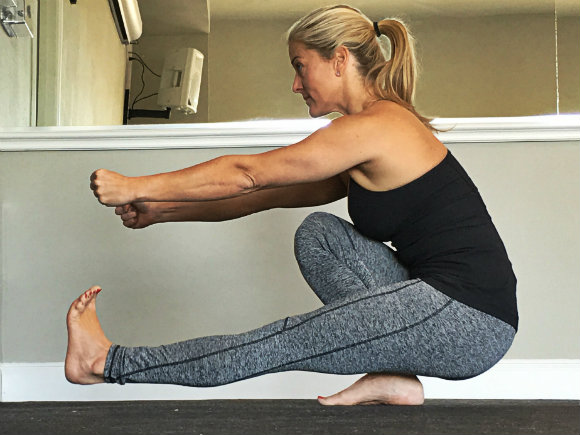 Pistol Progressions
Pistol Progressions
If you determine from your self-assessment that you do not have the mobility to do a full-range pistol, then select a box elevation you can lower yourself to without losing tension. Lower under control on one foot until you graze the box with your glutes, then power back up to a full standing position.
If you determine that you have the proper mobility to get down into a full-range pistol, but you do not have the strength to stand back up, then you have a few options to increase your strength:
- Use a box elevation. Unlike the first scenario, in this exercise, you will sit relaxed on the box with one foot extended in front of you. Then with a breath you will “zip up” your tension and stand on the other leg. Reset each repetition by sitting back down in a relaxed state, then repeat the exercise.
- Add single-leg deadlifts (SLDLs) into your program. Bodyweight SLDLs are a great place to start as they increase your balance and allow you to slow down and find any sticking points in the movement. After you have improved this skill, add a kettlebell to increase your strength.
- Use assistance at your sticking point. Your assistance could be a doorway to grip, a TRX, or a training partner. At your sticking point in the pistol—the point at which your strength will no longer allow you to complete the movement—grip your assistance and bring yourself to completion.
If you are lacking in the strength to stand up from your pistol, then program the above exercises into your weekly training for 3-5 sets of 5, two or three times per week. Watch the video below for demonstrations of these progressions.
Before You Train Your Perfect Pistol
Watch for instruction on toe and heel walking, the Iron Curtsy, and the progressions outlined above.
Prior to performing pistols, it is recommended you do ankle mobility drills as well as stretch your calves and hamstrings. A quick way to add ankle mobility work into your daily routine is to simply do toe walking and heel walking.
For calves and hamstrings, I recommend a drill I call the Iron Curtsy. This drill is extremely efficient because it stretches your calves, glutes, and hamstring all at once. However, it is very important that you hinge and maintain a neutral spine or you will lose the benefit of this stretch. If you are unsure if you are maintaining a neutral spine, you can hold a stick on your back. It should maintain contact with your head, thoracic spine, and sacrum while you do the Iron Curtsy.
Using Grease the Groove to Train the Perfect Pistol
Once you are warmed up, you can proceed to training your pistol in a grease-the-groove (GTG) fashion. The bodyweight pistol and its progressions are a great choice for GTG training as they can be done anywhere at any time. The GTG approach allows you to get in a higher volume of quality reps without the fatigue factor—and without even necessarily doing more than one rep at a time.
GTG works best when you focus on no more than two skills at one time, and the skills should be performed at about 50% of your max. The pistol pairs very well with the push-up (read this article on how to do the perfect push-up).
To get started, you must first test yourself using the perfect pistol instructions below to determine your current level. If you cannot meet the required steps for a single repetition, then select an appropriate progression as discussed above. If you meet all the requirements in the perfect pistol instructions, then proceed to test your max reps without losing form or test a harder progression
Once you have determined which version of the pistol you will train, you can proceed to greasing the groove at that level. Throughout the day do “sets” of one good rep, allowing at least fifteen minute of rest between each rep. For best results, do your GTG work a minimum of three days per week.
The SFB Pistol Standard
To perform a pistol, stand on one foot while holding the other leg out in front and lower to at least parallel. Parallel is defined as “the top surface of the leg at the hip joint is lower than the top of the knee.” People with no restrictions are encouraged to pistol rock bottom until the hamstring rest on the calf.
Additional details:
- You must be barefoot
- Your non-working leg may not touch the deck or the working leg
- Both the heel and big toe of working leg must stay planted
- Your hip and knee must fully extend at the top
- Balance must be maintained
- A pause at the bottom is recommended
Tips for Improving Your Pistol
- Make sure you have done adequate stretching before training
- Visualize the breath path (inhale on the negative, exhale on the positive)
- Visualize pulling yourself toward the ground versus dropping down to the ground
- Work on balance drills to increase your stability (use a doorway to assist you in the beginning)
- Maintain tracking of the hip, knee, and toe during each rep
- Stay fresh and allow a minimum of 10-15 minutes of rest between GTG sets
Training the Pistol in the Long Term
As you become stronger from your GTG practice, you do not have to maintain the purity of bodyweight pistols. You can add weight and continue with your GTG approach, or you can add sets and reps into your training program. As you increase intensity or load, remember to add adequate rest between sets to keep each repetition perfect. If you begin to fatigue quickly and are losing your form, switch to a regression or call it a day.
Once you have begun to add weight to your pistols, don’t forget that maintaining the ability to do a bodyweight pistol will still ensure you maintain an impressive amount of joint mobility, reflexive stability, and strength. So don’t stop training your bodyweight exercises and staying diligent to that perfect form—after all, good technique is the foundation for everything else.
Lay that foundation for impeccable technique by attending an SFB Course or SFB Certification.
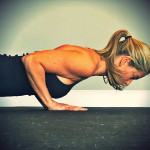
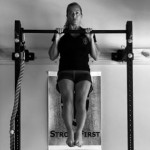
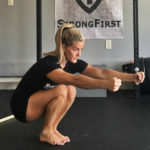
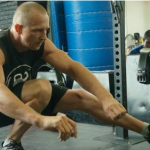


Very good article. Accurate and clear explanations to develop proper pistols. I’ve never found anybody trying to explain how to do them step by step and with the stretches needed. Thanks a lot, Sara from Spain.( I’m delighted having found STRONG FIRST!!!!!.
Excellent instruction!
Dr. Stuart McGill, a friend of Pavel’s, recommends a one legged squat where the hands go out front and the hanging leg goes behind the body. Is there a significant difference between these two versions?
From your description, I think you are speaking of the airborne lunge. This is a great option also and requires less balance and less mobility in my opinion.
Excellent article, very helpful! Great job! Very impressive!
What is the best way to program the heel/toe walks and the Iron Curtsy? After or before each pistol session? Go for time or reps? Thank you for writing, this article came at just the right time for me.
the walks and the Iron Curtsy should be done prior to your pistol to warm up your ankles and loosen the hamstrings and calves. Just a few of each unless you are extremely tight.
I found this really helpful.
Was talking to someone in work gym who saw me doing these & asked about how to start training them.
I will point then in this direction.
Found the warm ups really good to, I have not seen then before.
thank you so much